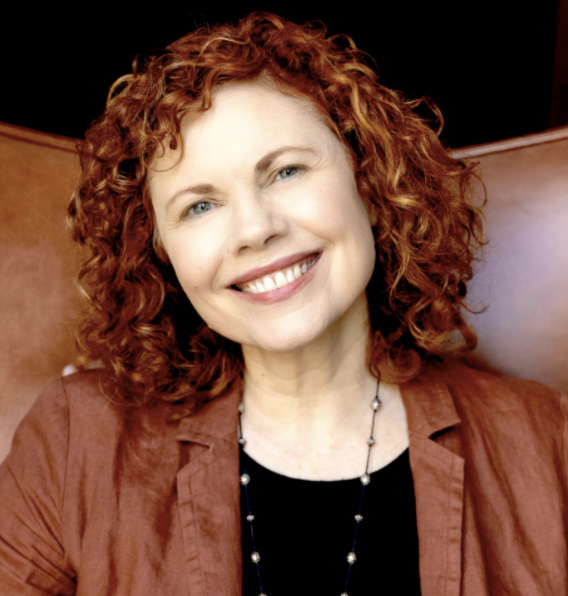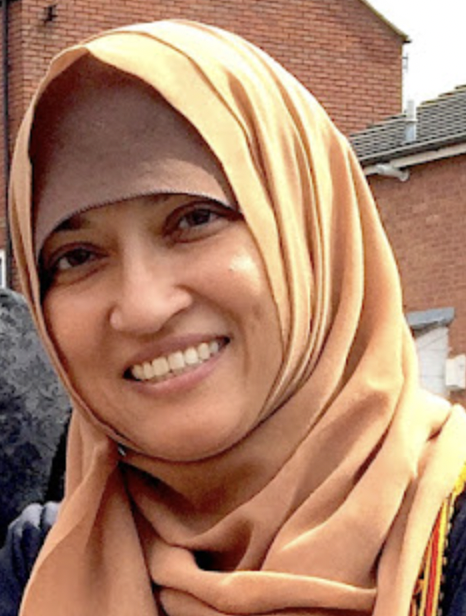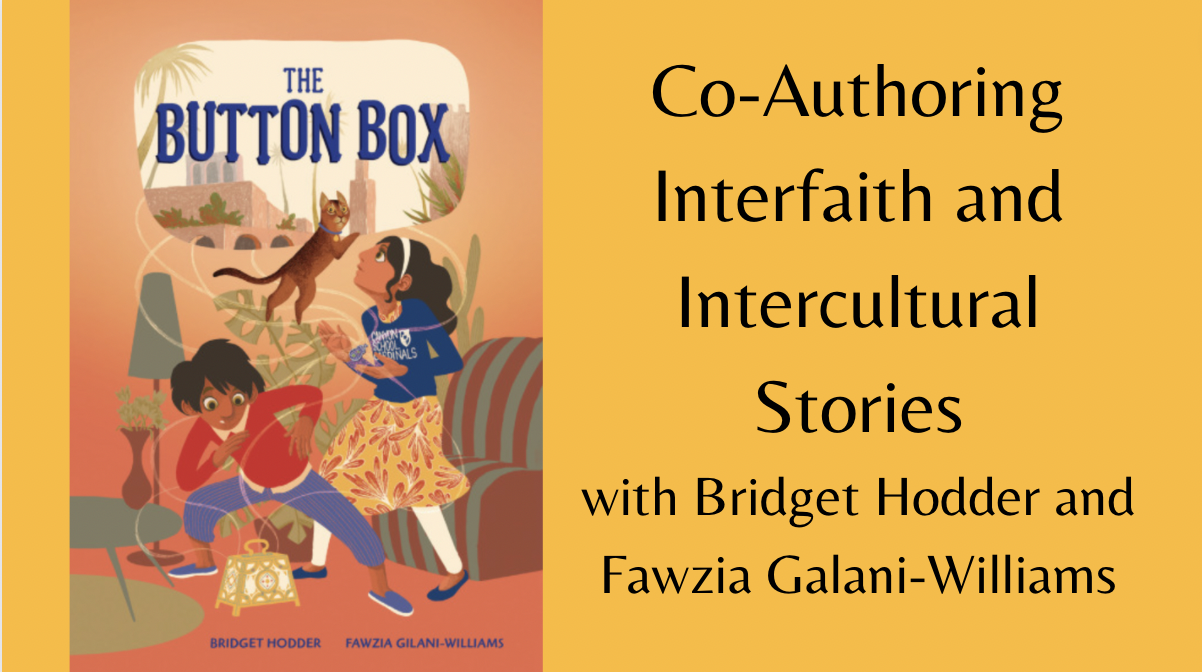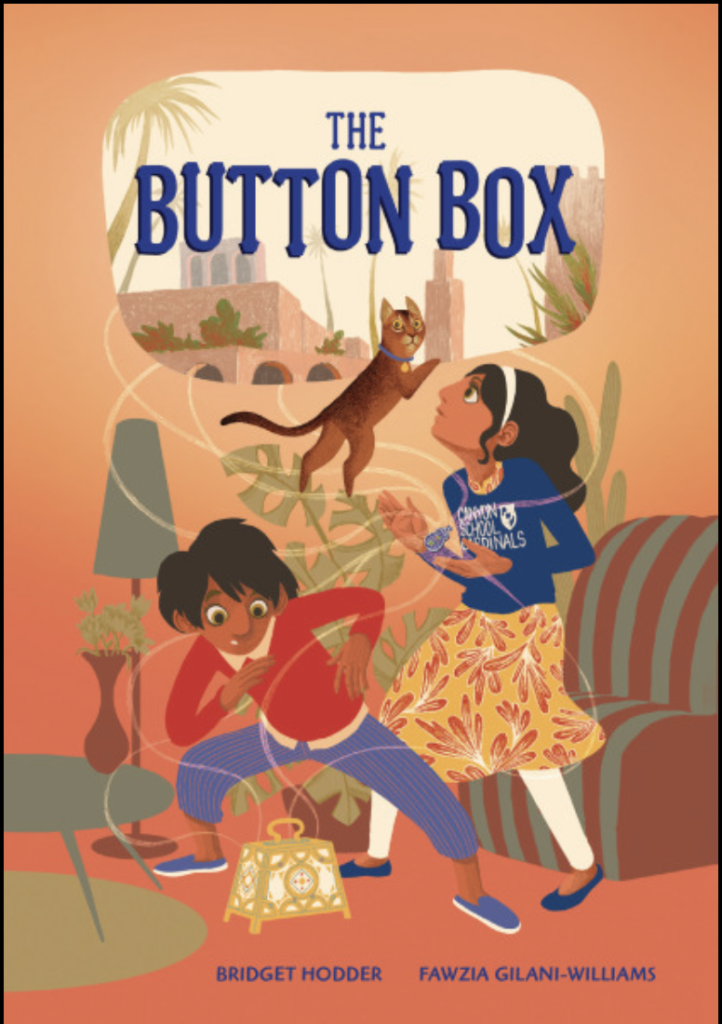guest post by Bridget Hodder, with Fawzia Gilani-Williams
I’m Bridget Hodder, co-author with Fawzia Gilani-Williams of the middle grade time travel novel The Button Box (Lerner Publishing/Kar Ben). As a Sephardic Jewish author worried about the increasing anti-Semitism in the world, I decided to write a historical fantasy that would both entertain and enlighten young readers. Since Sephardic Jewish and Muslim history are so closely and beautifully intertwined, it quickly became clear that the story needed not only an authentic Sephardic Jewish protagonist, but also an authentic Muslim co-protagonist. And so I asked Fawzia, a Muslim author, to join me in the project.
Fawzia’s background is in elementary schooling, and when she noticed there were very few books that gave visibility to the Islamic faith and culture of her students, she began searching for a solution. Inspired by Canadian indigenous efforts and the work of Dr. Rudine Sims Bishop, she decided to write “mirror” books for Muslim children, to fill that gap. These have included stories about Eid (the festival at the end of Ramadan), and Islamic adaptations of fairy tales like Cinderella, Snow White, Sleeping Beauty and Rapunzel. She also wrote a picture book, Yaffa and Fatima Shalom Salaam, depicting peaceful friendship between a Jewish and Muslim girl, which ended up winning the Sydney Taylor Award, an honor from the Association of Jewish Libraries.
So it’s appropriate that we focus today on co-authorship, and specifically on how two authors can write interfaith or intercultural stories together–a great way to make sure that the books our children read are based on a rich variety of authentic, lived experience.
We’d like to share with you just a few of the issues we grappled with as we put together a book that could reach readers and be stocked in classrooms throughout the world.
Craft Notes:
(citations are to the paperback edition of The Button Box)
1) Be open to developing trust between co-authors. The first things cross-cultural and/or interfaith co-authors need are open minds and open hearts. Fawzia and I kept renewing our commitment to openness as we built trust between us. When co-authoring, don’t be impatient; trust can only build gradually as you work together. Neither author should come into the relationship believing that their contribution matters more than the other’s.
2) Come up with a book glossary beforehand that co-authors can use and augment as you go along. (pp. 130-132) Anyone who is familiar with Muslim countries and Islamic culture will know that Muslims commonly use words like inshallah (God willing), alhamdulilah (praise be to God), bismillah (in the name of God) or asalaamu alaikum (peace be with you) in everyday speech. And Sephardic Jews have a special language called Ladino that uses expressions filled with Spanish, Hebrew, Arabic, and Turkish. Sharing information, we reached a point while writing the book where each of us could use an Arabic or Hebrew term correctly, in context!
3) Figure out the No-Gos: At first, I wanted to call the powers of the Button Box “magical”–a term that holds no negative load for me, culturally. But Fawzia was able to prevent any offense or misunderstanding in our observant Muslim readers by advising that we avoid the word “magic,” since Muslims (and some Jewish groups) feel it has negative implications on a deeper level, related to sorcery, witchcraft and the evil eye. We had similar revelations regarding the mention of alcohol (originally there were ancient merchant ships in the book that carried wine as well as olive oil and grain; see pg. 25, paragraph 2), violence, and boy-girl interactions, as Muslim traditions differ from some Jewish ones on these issues.
4) Maintain the Balance: Pay attention and make sure that both voices and traditions are reflected in a way that gives roughly equal time to their differences and to their commonalities. Since there are many points of sharing within the beliefs and practices of Judaism and Islam, we worked to highlight them, as a message of peace. Yet we also worked to show the beauties of our cultural differences. In successive chapters, in which both protagonists time-traveled to the ancient past, I wrote a scene of a family sharing a Jewish prayer (pg. 75), and Fawzia gave our male Muslim protagonist a chance to answer the afternoon call to prayer wafting up from the town on the breeze (pg. 69).
By giving positive visibility to both Jewish and Muslim elements within The Button Box, we have resisted what scholar Clare Bradford calls the “literary universality of Eurocentrism and the Orientalist tendency to homogenize colonized peoples.” By working together, Fawzia and I were able to create harmony in our working relationship that was expressed as harmony between our protagonists in the book.
5) Consider adding informative material at the end of the book. On pages 133-139, we offer readers definitions of who Muslims are, who Jews–and Sephardic Jews in particular– are, and brief discussions of the historical events in the book. There is also a map which appears before page 1, allowing kids to follow the journey of the heroes as they read. Giving readers and teachers references for further reading is yet another way of making books for children more classroom-friendly and makes the story accessible to all readers.
We wish you success in your own co-authoring efforts. We also hope you will read The Button Box and let us know if you think we succeeded! Contact us at www.FawziaGilani.com and www.BridgetHodder.com

Bridget Hodder is a Sephardic historian, reading specialist, and learning disability specialist who has worked in both the Massachusetts and Texas public schools and has taught at Vanderbilt University. Her Middle Grade books, THE RAT PRINCE (Macmillan/FSG) and THE BUTTON BOX (Lerner Books/Kar-Ben) and her upcoming picture book THE PROMISE, co-authored with Fawzia Gilani, feature characters not usually seen in the literary spotlight.

Fawzia Gilani-Williams was born and raised in England where she became a teacher. She is the author of many children’s books, including A Treasury of Eid Tales, and is currently working on an Islamic fairy tale series, and most recently co-authored The Button Box with Bridget Hodder. She serves as an international educational consultant with a PhD in children’s literature and character development. She is a Global Representative for the International Positive Education Network and works for the Abu Dhabi Education Council. She spends her time in the United Arab Emirates, Ohio, and England with her daughter and husband. She looks forward to the day when world conflict is no more.
Read our previous interview with Bridget Hodder:
and our craft review of her debut middle grade novel The Rat Prince.


COMMENTs:
0